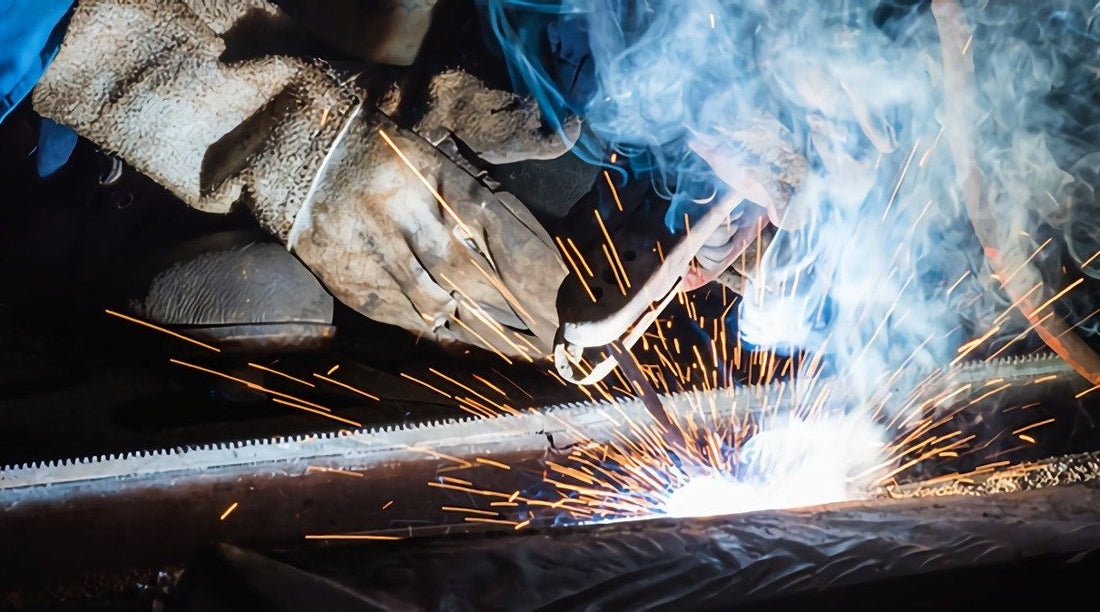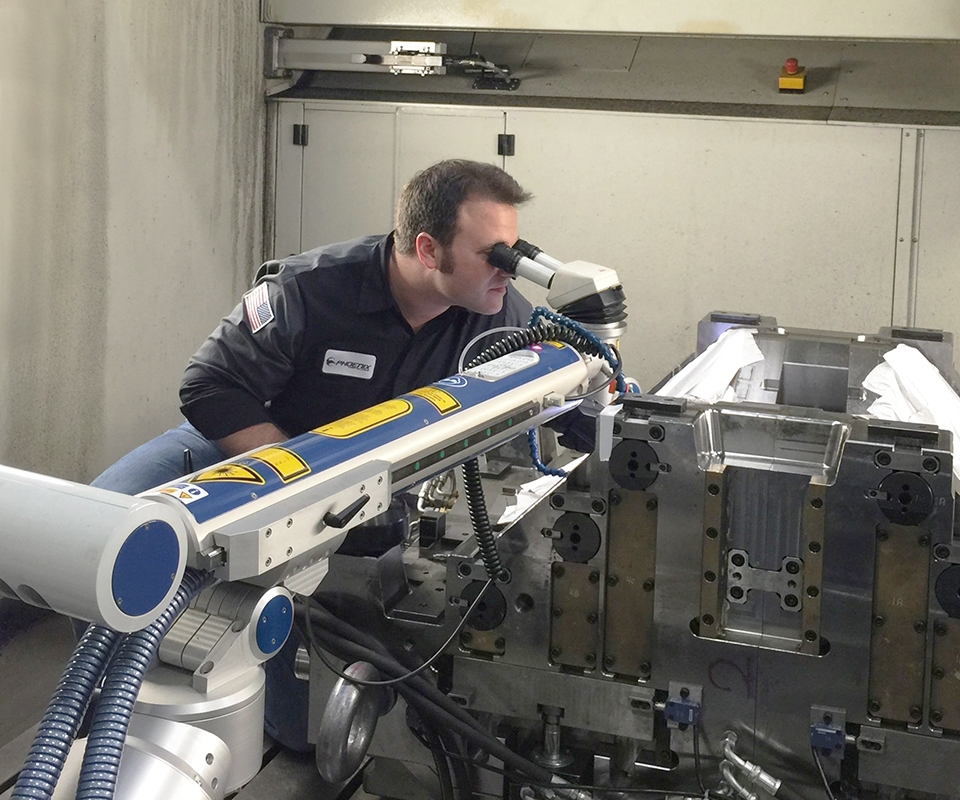Typical Welding Repair Service Issues and How to Address Them Efficiently
Welding repair services usually come across a range of concerns that can endanger the honesty of the last product. Common troubles consist of inadequate infiltration, porosity, and imbalance, among others. Each defect offers unique obstacles that call for particular techniques for resolution. Comprehending these concerns is crucial for welders aiming to boost their skills and results. This conversation will certainly explore these usual welding repair concerns and effective approaches to resolve them.
Inadequate Infiltration
Inadequate penetration happens when the weld metal falls short to totally fuse with the base product, leading to weak joints and potential structural failures. This issue typically originates from insufficient heat input, inaccurate electrode angle, or incorrect welding speed. Welders may experience insufficient penetration due to a mistake of the essential specifications for a certain material density or type. Furthermore, contamination on the base product's surface can prevent efficient bonding, intensifying the trouble. To deal with inadequate infiltration, welders ought to ensure appropriate settings on their tools and preserve a tidy work surface. Normal examination of welds is suggested to recognize any type of deficiencies early, allowing for timely adjustments and the prevention of endangered structural integrity in bonded settings up.
Porosity
Porosity is an usual flaw in welded joints that shows up as small gas bubbles entraped within the weld metal. This problem can endanger the honesty of the weld, causing reduced stamina and possible failing under stress. Montana Mobile Welding and Repair Belgrade Fabrication. Porosity usually occurs from contamination, wetness, or improper welding strategies, which allow gases to escape into the molten weld swimming pool. To attend to porosity, welders need to ensure appropriate surface prep work, maintain a tidy workplace, and make use of suitable welding specifications. Furthermore, choosing the appropriate filler product and securing gas can reduce gas entrapment. Routine inspection and testing of welds can help recognize porosity early, guaranteeing prompt corrective activities are taken, consequently preserving the high quality and reliability of the bonded framework
Imbalance
Misalignment in welding can arise from different factors, consisting of incorrect arrangement and thermal expansion. Understanding the origin is important for reliable resolution. Numerous adjustment methods are available to straighten elements and ensure structural stability.
Root causes of Misalignment
Welding misalignment often comes from a selection of underlying issues that can compromise structural integrity. One main reason is inappropriate fit-up of parts before welding, which can bring about voids and unequal surface areas. Variants in thermal development during the welding process can additionally cause distortion, particularly if the materials being signed up with have various coefficients of growth. In addition, insufficient fixturing and securing may fail to hold components securely in location, causing movement throughout welding. Inadequately maintained tools, consisting of welding devices and devices, might present incongruities in the weld bead, further adding to misalignment. Ultimately, driver error, originating from insufficient training or experience, can additionally play a significant role in producing misaligned welds.
Adjustment Techniques Readily Available
Dealing with misalignment successfully calls for a combination of corrective strategies customized to the particular concerns at hand. One common technique is using jigs or fixtures to hold components in the appropriate setting throughout welding, ensuring regular positioning. Additionally, preheating the products can assist reduce distortion and enhance fit-up. For considerable misalignment, mechanical adjustment techniques, such as using hydraulic jacks or clamps, can be employed to fix the setting before welding. Post-weld warm therapy may additionally be necessary to eliminate stresses caused by imbalance. Ultimately, mindful inspection and modification during the setup phase can protect against misalignment problems from ending up being considerable troubles, promoting a smoother welding process and enhancing general structural stability.
Distortion
Distortion is a common challenge in welding that can develop from various variables, including irregular heating & cooling. Comprehending the reasons of distortion is important for applying effective avoidance methods. Resolving this problem not only enhances structural honesty but also boosts the overall quality of the weld.
Reasons for Distortion
When subjected to the extreme warm of welding, materials typically undergo modifications that can cause distortion. This phenomenon primarily develops from thermal growth and contraction throughout the welding procedure. As the weld location warms up, the product broadens; upon air conditioning, it contracts, which can develop interior anxieties. Furthermore, uneven home heating throughout a work surface can worsen these stresses, causing bending or flexing. The type of material additionally plays a significant role; welding solutions steels with differing thermal conductivity and coefficients of expansion may respond in a different way, causing unpredictable distortions. Poor joint style and inadequate fixturing can add to imbalance throughout welding, enhancing the likelihood of distortion. Understanding these causes is important for efficient welding repair work and avoidance techniques.
Avoidance Techniques
Effective avoidance strategies for distortion during welding emphasis on controlling heat input and making certain proper joint design. Maintaining a constant heat input helps to reduce thermal development and tightening, which can bring about distortion. Making use of methods such as preheating the workpiece can likewise minimize the temperature gradient, promoting consistent home heating. Furthermore, selecting proper joint layouts, such as T-joints or lap joints, can improve stability and reduce tension concentrations. Applying correct fixturing to safeguard the workpieces in place further help in preserving positioning during the welding procedure. Staggered welding series can disperse warmth extra equally, preventing localized distortion. By using these approaches, welders can significantly lower the chance of distortion and boost the general high quality of their welds.
Fracturing
Breaking is an usual issue experienced in welding repair services, often arising from different factors such as incorrect air conditioning rates, product selection, or poor joint preparation. The incident of fractures can considerably jeopardize the stability of the weld, bring about potential failures throughout procedure. To resolve this concern, welders should initially evaluate the origin triggers, making certain that products are suitable and suitably chosen for the particular continue reading this application. Additionally, regulating the air conditioning price during the welding process is necessary; fast cooling can induce stress and result in splitting. Correct joint style and preparation additionally contribute to decreasing the danger. Executing these methods can improve weld quality and durability, inevitably minimizing the chance of cracking in finished weldments.

Insufficient Combination
A substantial concern in welding repairs is incomplete fusion, which takes place when the weld steel does not appropriately bond with the base material or previous weld passes - Belgrade. This problem can cause weak points in the joint, potentially compromising the integrity of the bonded framework. Factors adding to insufficient blend include insufficient warm input, improper welding strategy, and contamination of the surface areas being signed up with. To resolve this issue successfully, welders ought to assure proper pre-weld cleansing and surface area prep work, in addition to readjust their welding parameters to attain adequate penetration and blend. Routine assessment during the welding process can likewise help identify insufficient blend early, enabling for prompt restorative actions to enhance the overall quality of the weld
Overheating
While welding repairs can boost architectural honesty, overheating presents a considerable difficulty that can cause material destruction. Extreme warmth throughout welding can modify the mechanical residential properties of steels, leading to decreased stamina, boosted brittleness, and bending. This sensation is particularly crucial in high-stress applications where architectural dependability is critical. Determining getting too hot can include aesthetic assessments for staining or distortion, along with keeping an eye on temperature throughout the welding procedure. To alleviate the threats connected with getting too hot, welders should use appropriate methods, such as regulating heat input, adjusting travel speed, and using appropriate filler products. Furthermore, executing pre- and post-weld warm therapies can assist restore product properties and improve the overall top quality of the repair service, making certain long-lasting efficiency and security.
Regularly Asked Inquiries
What Are the Usual Indicators of a Welding Issue?

Just How Can I Examine My Welds for High quality?
To check welds for top quality, one can make use of visual assessments, ultrasonic screening, and radiographic approaches. Each method assures structural stability, identifies defects, and verifies adherence to defined requirements, inevitably enhancing the reliability of the bonded joints.
What Safety Preventative Measures Should I Take While Welding?
When welding, Go Here one need to focus on security by putting on ideal personal safety equipment, guaranteeing correct air flow, securing flammable materials away, keeping a tidy workspace, and being mindful of surroundings to prevent injuries and crashes.
Can I Repair a Weld Without Renovating the Entire Joint?
Fixing a weld without remodeling the entire joint is possible, depending on the damage (Montana Mobile Welding and Repair). Strategies such as grinding, adding filler product, or utilizing a welding process can efficiently deal with details problems while preserving the bordering structure
What Tools Are Essential for Efficient Welding Repair Works?
Necessary tools for effective welding repairs consist of a welding machine, wire brush, mill, safety gear, clamps, and filler materials. Each device plays an important duty in making certain quality and security during the fixing procedure. Porosity usually occurs from contamination, moisture, or improper welding techniques, which allow gases to get away right into the molten weld swimming pool. Poorly maintained equipment, consisting of welding machines and tools, might introduce incongruities in the weld grain, further adding to imbalance. When subjected to the extreme warmth of welding, products often go through modifications that can lead to distortion. Cracking is a common issue experienced in welding repairs, commonly resulting from numerous aspects such as inappropriate cooling rates, product selection, or insufficient joint prep work. A significant concern in welding repair work is incomplete fusion, which takes place when the weld steel does not properly bond with the base material or previous weld passes.